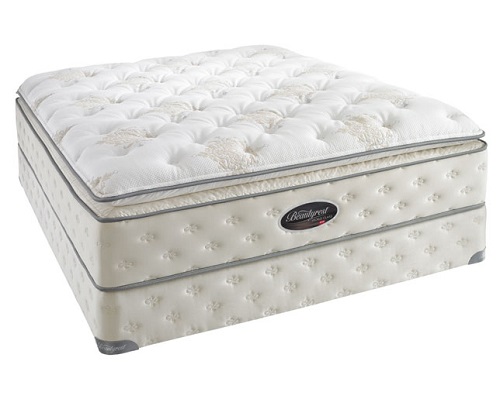Difference Between Plush and Pillow-Top

Pillow-Top Mattress
Plush vs. Pillow-Top
Several years ago, choices were limited when it comes to mattresses, but currently there are many options. Some examples of different mattresses are: firm mattress, pillow-top mattress, plus mattress, and euro-top, also known as box-top, mattress. Before these types of mattresses entered the market, coil spring mattresses were the only type you could find. But thanks to the current variety of choices, purchasing the right mattress is a bit stressful, as you have to consider all of its attributes in order to find the right fit. You have to consider whether you want a firm or a soft one, plush or pillow top, memory foam or the traditional coil-spring. Meeting the qualities you are looking for is essential; the kind of mattress you purchase will determine the quality of rest you will get when you sleep on it. Therefore, it is very important to get the perfect one for you.
Memory foam mattresses are a very popular choice today. Memory foam was first used by NASA. It gives great support to your body because it is designed to respond to your body heat. It tends to soften in areas of your body that are warmer than the other parts, while the foam touching the cooler parts of your body stays firmer. Some people say that it gives you a floating feeling. This type of mattress helps relieve back problems, painful joints, and aids in maintaining optimal spinal alignment. Coil-spring mattresses were the first kind available on the market, and are the most common type of mattress in households. They contain coil springs to support your back. The higher the coil count, the firmer the coil spring mattress. Another type of mattress you can purchase is the latex foam. This type of mattress is known for being long lasting, and you can also get one custom made to fit your body shape. The disadvantage of a latex foam mattress is that it can be a little expensive compared to the other options
Aside from the mentioned mattresses, there are two types that are often compared to one another. Many people think that pillow-top and plush mattresses are just the same – they are not. A plush mattress has one to four inches of additional layers on top of a firm mattress. The more additional padding it has, the softer it is. A pillow-top mattress is softer than a plush mattress; unlike the plush that has additional layers, the pillow-top mattress has a cushion-like pillow top that covers the mattress. A plush mattress is ideal for people who just want additional softness in their mattress, but people who prefer fluffy beds should opt for the pillow-top variety instead. If you want your mattress to offer more back support, the plus is the way to go. Pillow-top mattresses are more expensive than plus ones, and they can’t be flipped over if you want to try and extend their lifespan. They also need bigger sheets compared to some others due to their thickness.
Summary:
1.Plush mattresses have an additional layer on top of a firm mattress for additional softness. Pillow-top mattresses have a cushion-like pillow top on top of an ordinary mattress.
2.Plush mattresses offer more back support compared to pillow-top ones.
3.Pillow-top mattresses are more expensive than plush ones.
4.Pillow-top mattresses can’t be flipped over to prolong their lifespan.
5.Pillow-top mattresses are softer than plus ones.
6.Pillow-top mattresses are thicker than plush ones, and therefore require larger sheets.
- Differences Between Fraternity And Sorority - January 8, 2014
- Differences Between Lucite and Plastic - January 7, 2014
- Differences Between Oil and Butter - January 6, 2014
Search DifferenceBetween.net :
 Email This Post
: If you like this article or our site. Please spread the word. Share it with your friends/family.
Email This Post
: If you like this article or our site. Please spread the word. Share it with your friends/family.
Leave a Response
References :
[0]http://creoleindc.typepad.com/rantings_of_a_creole_prin/2013/04/pillowtop-mattress.html

